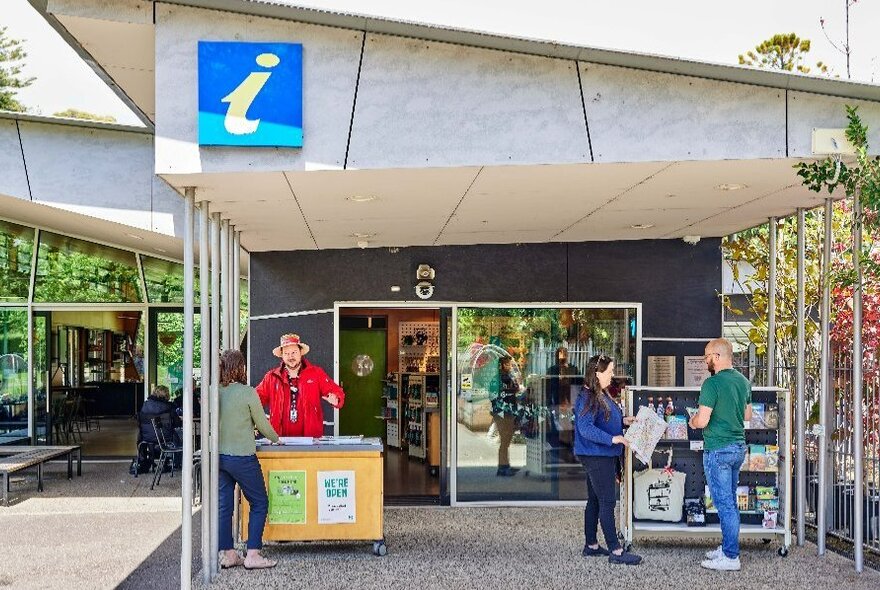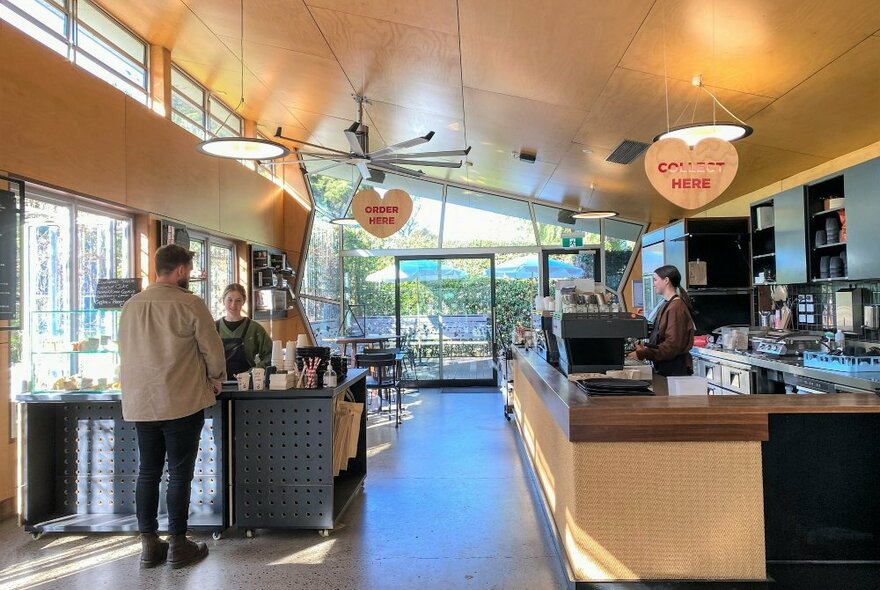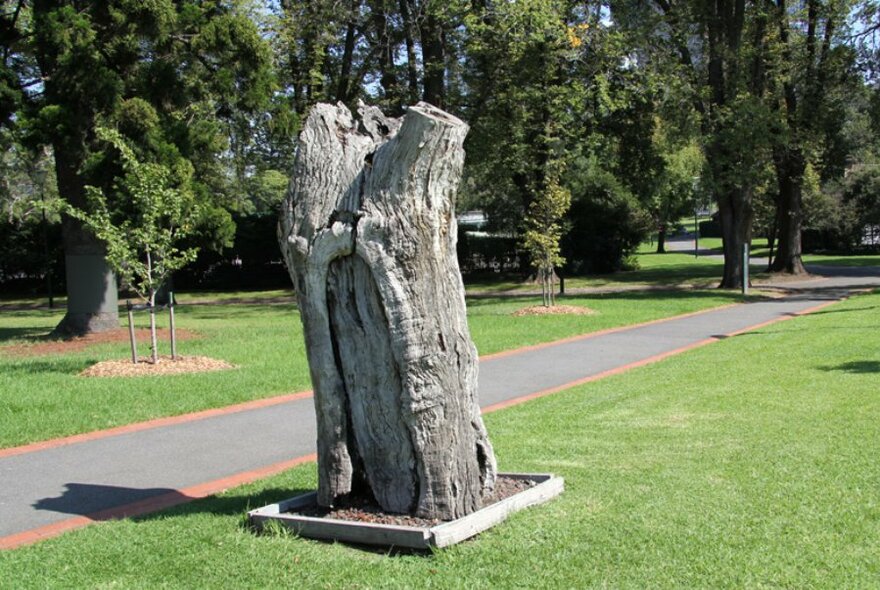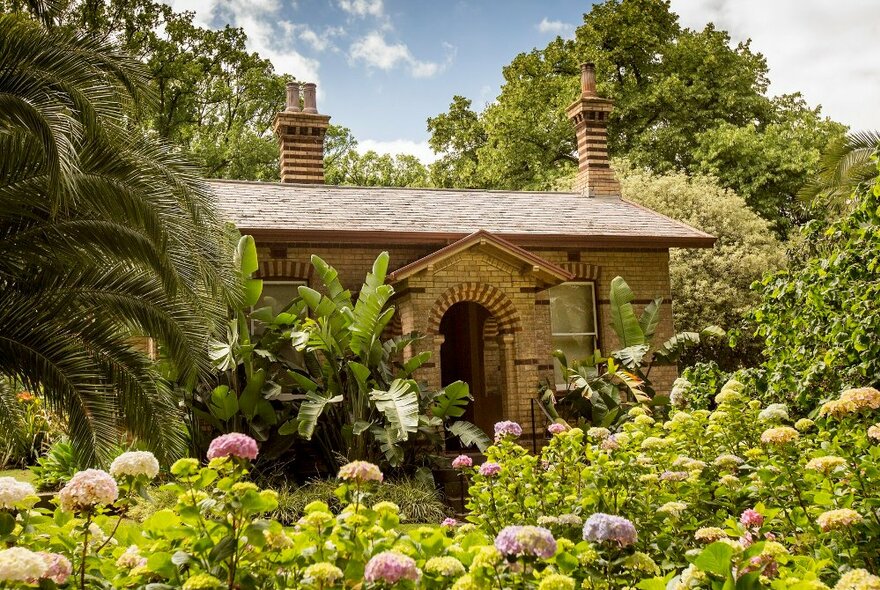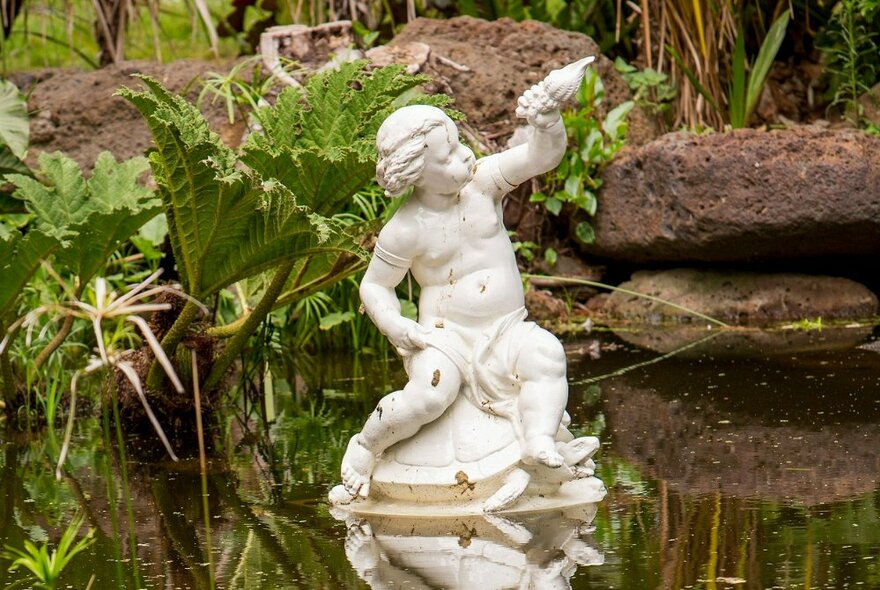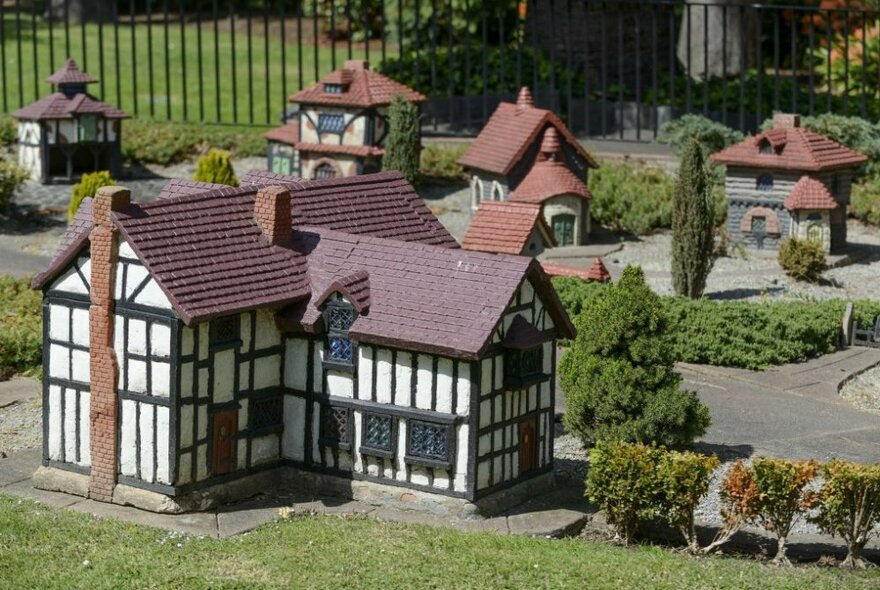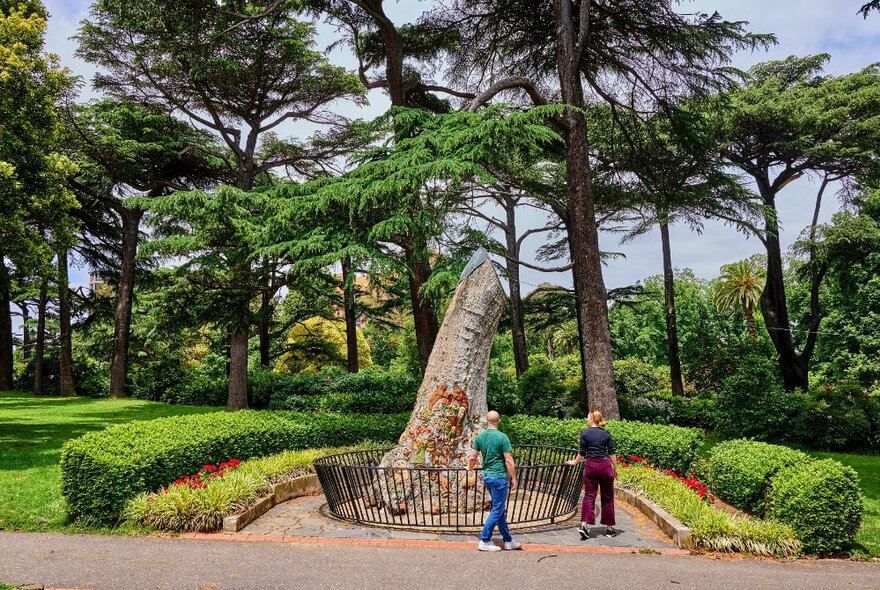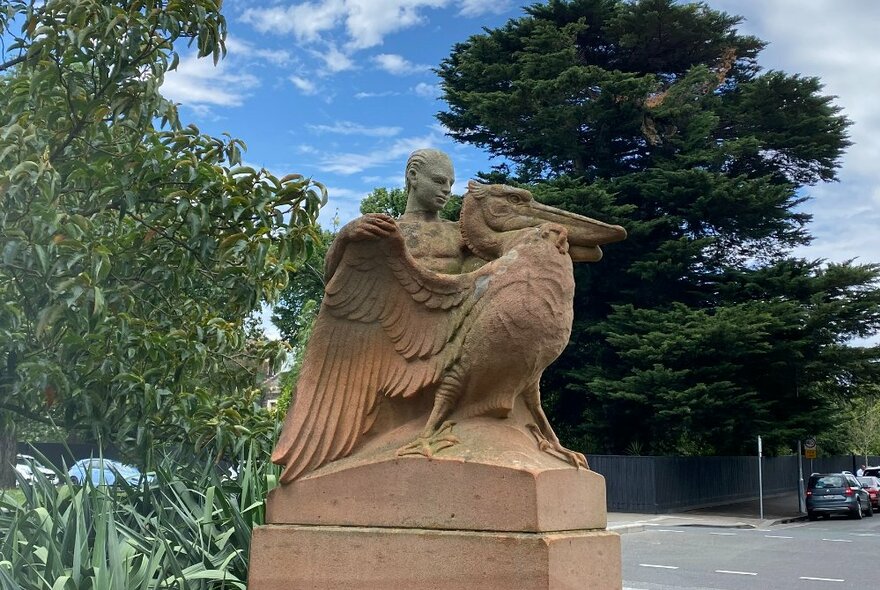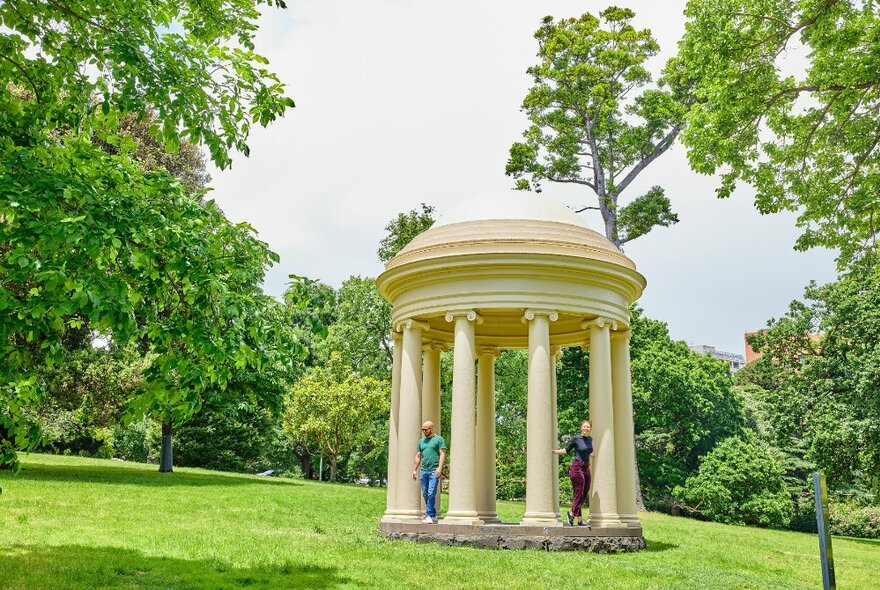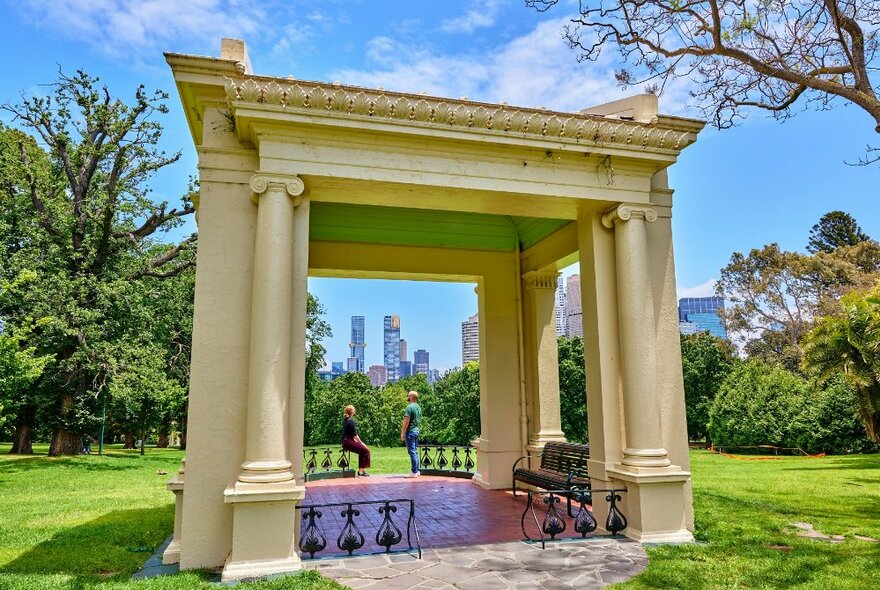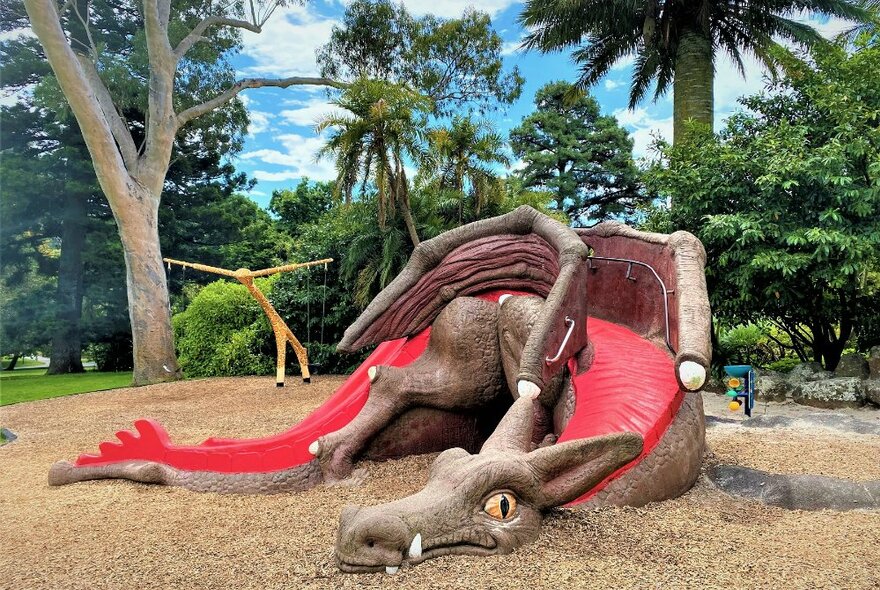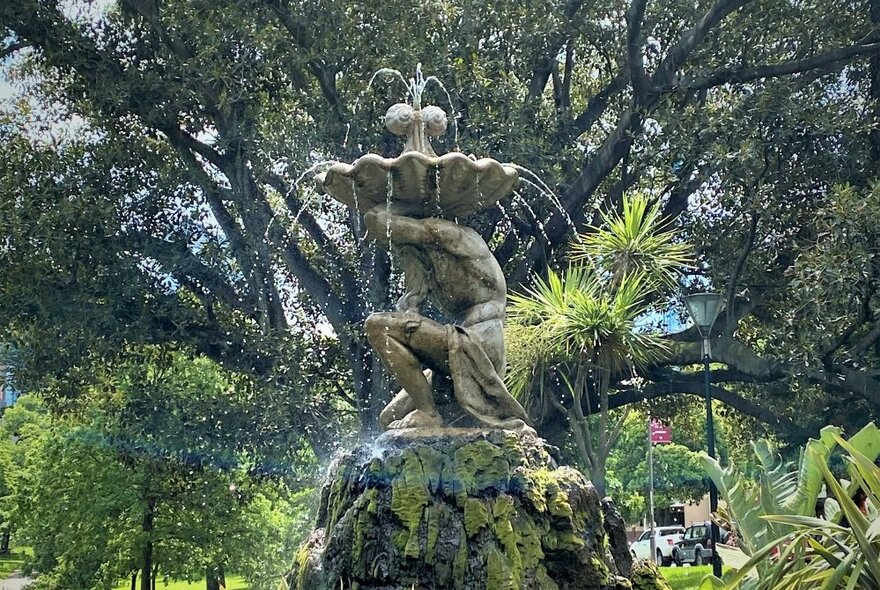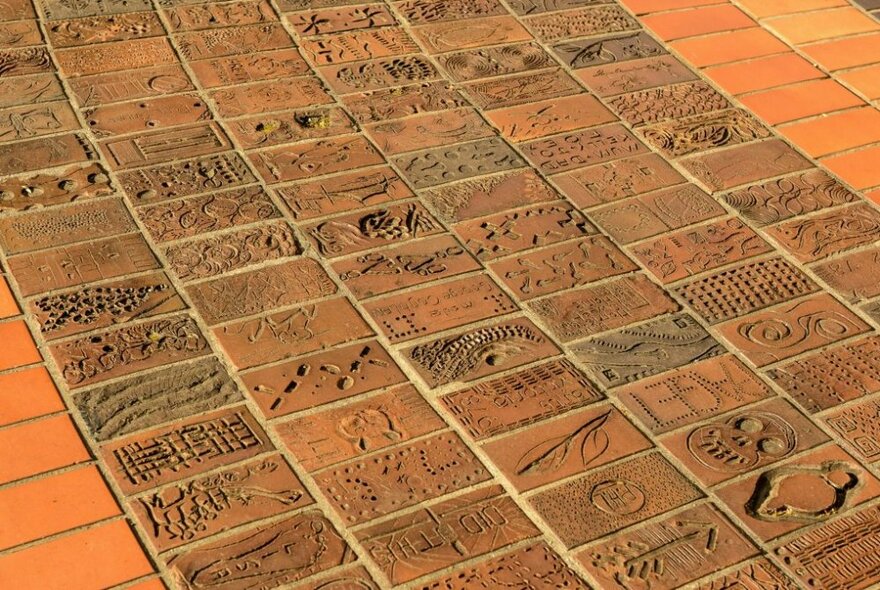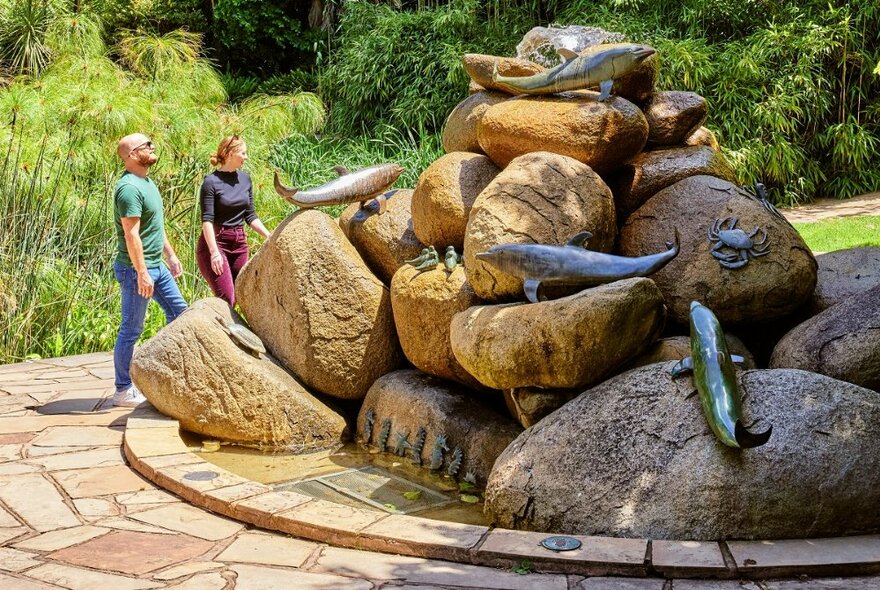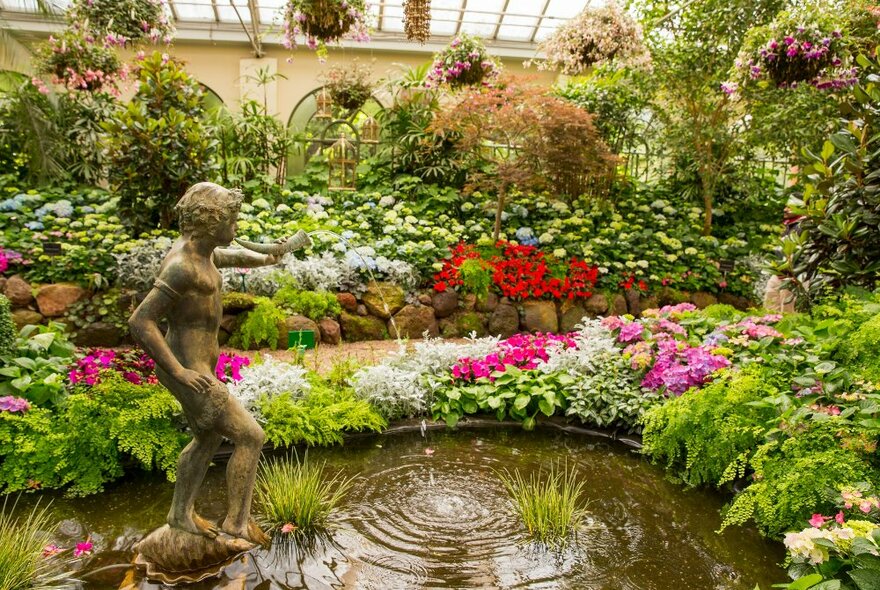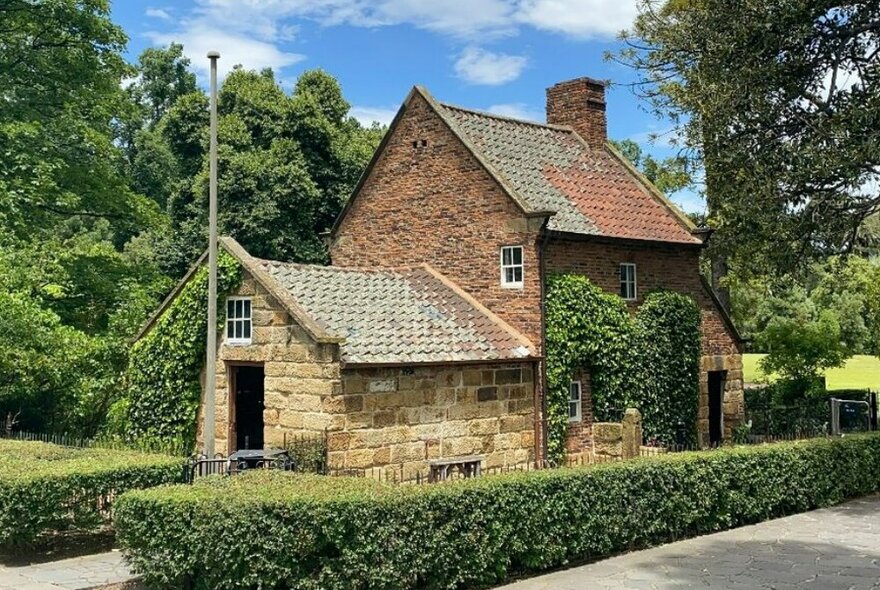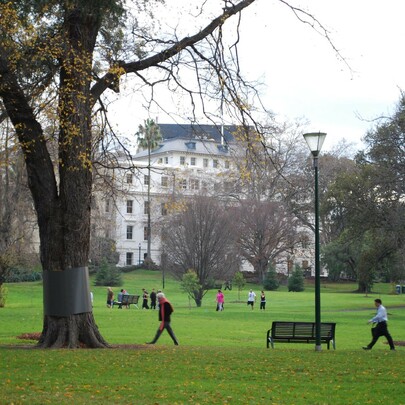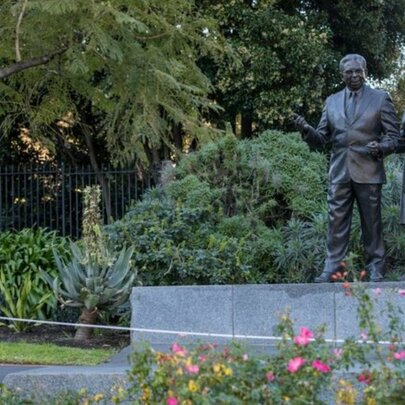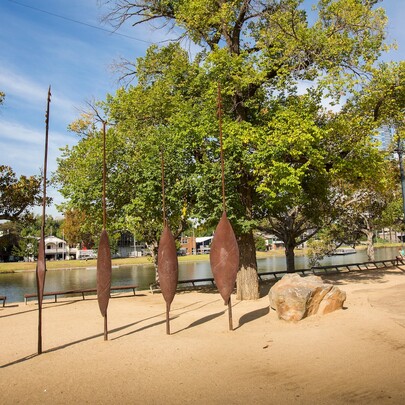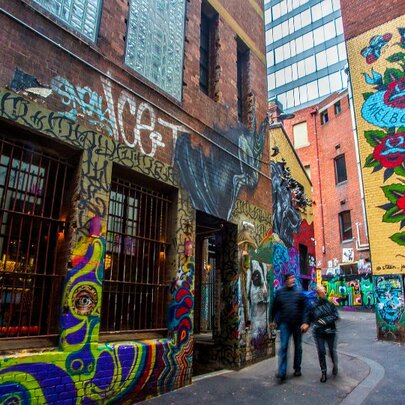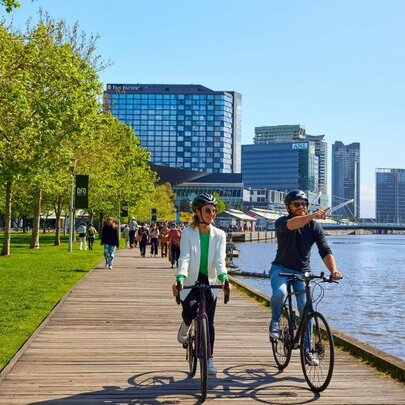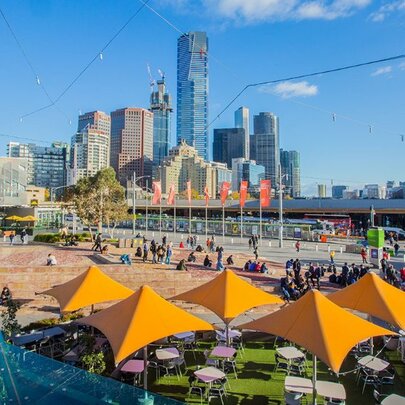Plan ahead for New Year's Eve with transport, road closure and accessibility info.
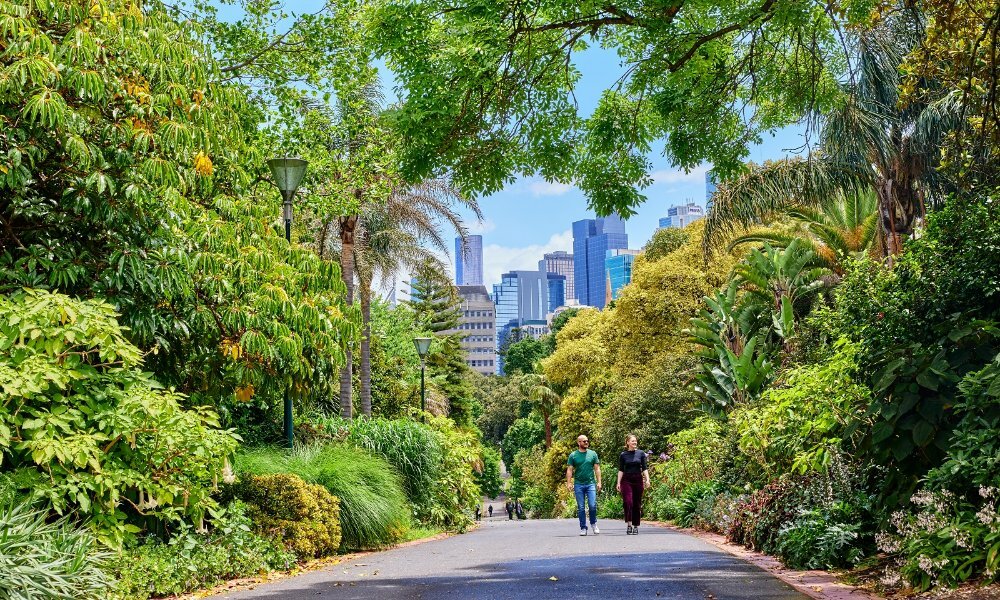
Fitzroy Gardens walk
The beautiful and historic Fitzroy Gardens is situated on Wurundjeri Woi-wurrung Country and is the perfect antidote to too much time indoors. The open, 64-acre space was laid out in 1859, following traditional Victorian era design, and named after Sir Charles Augustus Fitzroy, Governor of NSW.
If you’re looking for an iconic Melbourne garden walk, this is an excellent place to start – check out some of the highlights below. This walk takes around 90 minutes.
Begin your journey
Start your exploration of the gardens at The Fitzroy Gardens Visitor Centre (stop 1), where you can access visitor information services and purchase from a locally sourced retail range.
Pop next door for a coffee or a bite to eat at the KereKere Green café – you can even pre-order a picnic. Then, learn more about the stormwater harvesting system in the park.
1. Fitzroy Gardens Visitor Centre
KereKere Green
2. Stormwater Harvesting System
First Nations history
Next stop in the Scarred Tree, one of six identified across the city. To further explore places of Aboriginal significance, visit this interactive map of the City of Melbourne, which reveals something of Aboriginal peoples’ deep connection to this Country, the City of Melbourne, and significant events and experiences since colonisation.
3. Scarred tree, Fitzroy Gardens
Architecture and artworks
Fitzroy Gardens is home to impressive architecture and artwork, with some pieces dating back to the 1800s.
4. Sinclair's Cottage
Nearby you’ll find Sinclair’s Cottage (stop 4). This Italian Romanesque-style home was designed by Francis Maloney White and built in 1866 for head gardener James Sinclair. There is a lot of character in this very well preserved cottage, its walls alternate between a dominant cream and red brickwork, and two chimneys that stand out on the ceiling.
5. The Boy and the Turtle
Across a wooden bridge, at the back of the pond resides the 1850s bronze sculpture, The Boy on the Turtle (stop 5) by an unknown artist. The bronze statue was stolen from the gardens in 1977, a remarkable feat considering its weight. Two and a half years later, it was found by the police in an abandoned Richmond car park.
6. Model Tudor Village
At the next stop channel your inner child by visiting the Model Tudor Village and the Fairies’ Tree (stop 6). The tiny, rambling village was gifted in 1947 from the people of Lambeth in England, in appreciation for food parcels from Australia sent during WWII. The artist, Edgar Wilson was a 77-year-old pensioner living in England when he built this model Tudor, one of three villages he built, and it represents a typical Kentish village during the Tudor period.
Fairies' Tree
Across the path you’ll spot the Fairies’ Tree, sculpted in one of the original red gum trees in Fitzroy Gardens in 1934 by Ola Cohn. The Australian artist born in Bendigo, in her artistic work features fairies, dwarfs, gnomes, jackass and a variety of Australian animals and birds.
7. Sandstone Sculptures
The Boy and Pelican, and Mermaid and Fish (stop 7) pyrmont sandstone sculptures guard Hotham St entrance, one of the main entrances to the garden. A special art sub-committee was established in the 1930s to assist the City Council Parks and Gardens Committee select statuary appropriate for the City's Gardens.
These sculptures won first prize in the Fitzroy Gardens Sculpture Competition, held in 1935. As an interesting fact, the head of the boy was replaced in 1973, after the statue having fallen victim to vandalism.
8. Rotunda
Make sure you check out the historic Rotunda (stop 8), built in 1873 by Thomas Julian & Co., and also known by the name ‘Temple of the Winds’, a circular masonry structure, with 10 columns supporting a domed roof; it rests on rough, dressed bluestone footings.
9. Bandstand
Another 19th century structure that graces the garden is the temple-like Bandstand (stop 9), constructed in 1864 to host musicians playing for the crowds who flocked to the gardens. You can book these two charming spaces for events on the council website.
Playgrounds, pathways, and fountains
Kids will enjoy the fantasy-themed playground, while everyone can admire the various fountains and artistic pathways.
10. The Children's Playground
Loop back downhill to find the charming Children’s Playground (stop 10), where little ones love to visit the towering giraffe swing and popular dragon slide. A sandpit also offers a spot for the kids to play in the shade.
11. River God Fountain
Another must-visit sculpture, one of the Melbourne’s oldest surviving public artwork and notable work of Melbourne’s foremost early sculptor, Charles Summers. The enigmatic River God Fountain (stop 11), also known as Old Man Fountain, and Neptune, was created in 1862 to celebrate the development of a permanent water supply for Melbourne.
In 1962, it was replaced with Robin Boyd’s Fountain of the Birds. Some three decades later, in 1996, it was conserved and returned not to its original position, but to above a newly created rockery at the Eades Street entrance.
12. The People's Path
Next head towards Lansdowne Street to wander along the People’s Path (stop 12). It features 10,000 terracotta bricks set in the three concentric circles surrounding a raised garden bed, with plantings of palms and ivy. The exposed face of each brick features a hand-etched drawing. The associated plaque advises that the ‘tiles’ were made by the people of Victoria on the opening day of the Arts Victoria 78 Craft Festival.
13. Dolphin Fountain
In the middle of the garden, you will see the Dolphin Fountain (stop 13), created in 1982 by June Arnold. It comprises around 100 aquatic birds and animals, such as dolphins, crabs and seahorses, sculpted in bronze and fastened to a small pyramid of granite boulders over which water cascades.
June Arnold’s Dolphin Fountain caused quite a stir when it was proposed. Many of the fountain’s critics have found it at odds with the planned naturalism of the heritage-listed Fitzroy Gardens, but just as Arnold predicted it has been a favourite with children ever since its installation.
The Conservatory and Cooks' Cottage
Round out your tour of Fitzroy Gardens with a stop by these two historical buildings.
14. The Conservatory
15. Cooks' Cottage
More to explore
Whether you’re a nature-lover, culture buff, or searching for a quiet place to sit and relax, Melbourne’s majestic gardens are the place to be. Check out these equally charming and historic nearby gardens to discover more of Melbourne’s history.
Parliament Gardens Reserve
This small triangular park is a pleasant respite at the Spring Street end of town.
Treasury Gardens
A quick walk from Fitzroy Gardens, this heritage-listed garden was set aside as a public reserve in 1851. Wander the tree-shaded paths, featuring contrasting evergreen foliage of conifers, palms, and Moreton Bay figs against a background of deciduous elms, oaks, and poplars.
A pretty pond hosts a population of native ducks, and nearby you’ll spot the Victorian Emergency Services Memorial and a monument to John F Kennedy. You can also visit the Family Violence memorial, facing Lansdowne Street, adjacent to the northern edge of Treasury Gardens. It’s a special contemplative space for anyone seeking a respite.
Parliament Gardens
This small triangular park near Parliament train station has excellent views of Parliament House, Eastern Hill and St Patrick’s Cathedral. Here you will find the statues that commemorate Aboriginal activists Pastor Sir Douglas Nicholls and Lady Gladys Nicholls, as well a vibrant row of flowering jacaranda trees. Don’t miss the striking Coles Fountain, built in 1981 from stainless steel and bluestone.
Birrarung Marr
Birrarung Marr was a modern addition to the city’s green spaces, replacing railyards with a public park in 2002. The name comes from the Woi Wurrung language - ‘birrarung’ means ‘river of mists’ and ‘marr’ relates to ‘the edge’. The park features Aboriginal art installations honouring the diversity of Victoria’s First Nations cultures, as well as ArtPlay, a children's arts centre and gallery. It is a popular location for large events and festivals.
Download this walk
Download the Fitzroy Gardens Walk (PDF 413KB).
Discover more
Southbank and Docklands by bike
Cycle along Melbourne's iconic Yarra River to discover art installations and maritime history.
Heart of the city walk
Take a walk through legendary landmarks, iconic malls, hidden little streets and art-filled alleys.
